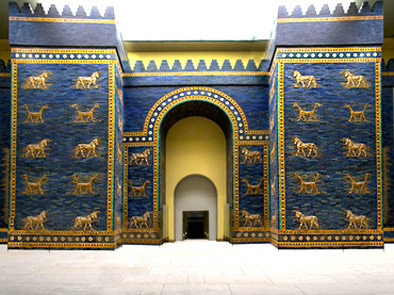Thursday, 22 December 2016
Monday, 19 December 2016
It "comes in as fast as a galloping horse": tides in Mont Saint-Michel
Today in class we studied what the tides are. You know, a regular rise and fall in the level of the sea, caused by the pull of the moon and sun; and we talked about the tides in Mont Saint-Michel.
Well, I've found the following article in The Independent, an English newspaper, about something that happened in July: "Normandy 'island' Mont Saint-Michel cut off by extreme high tide"
Mont Saint-Michel is an island commune in Normandy, France.
The island has got strategic fortifications since ancient times, and since the eighth century AD has been the seat of the monastery from which it gets its name. The structural composition of the town exemplifies the feudal society that constructed it. On top God, the abbey and monastery, below this the Great halls, then stores and housing, and at the bottom, outside the walls, fishermen and farmers' housing.
In prehistoric times, the Mont was on dry land. As sea levels rose, erosion reshaped the coastal landscape, and several outcroppings of granite or granulite emerged in the bay, having resisted the wear and tear of the ocean better than the surrounding rocks.
The tides in Mont Saint-Michel bay are very impressive: they can vary greatly, at roughly 14 metres between high and low water marks. The tide goes out very quickly over some 10 kilometres, and comes in again just as quickly. The expression used is that it "comes in as fast as a galloping horse". Today, Mont Saint-Michel is only surrounded by water to become an island during the great equinox tides, fifty-three days a year and for a few hours.
But the mount can still create many problems for visitors who avoid the causeway and attempt the hazardous walk across the sands from the neighbouring coast.
Friday, 25 November 2016
UNIT 3: WATER - DEFINITIONS
Look for these definitions in
your textbook (p. 44-47)
1.
lake
2.
river
3.
groundwater
4.
aquifer
5.
glacier
6.
iceberg
7.
ocean
8.
sea
9.
ocean
current
10.
tide
11.
wave
Wednesday, 23 November 2016
Islamic art
To help you with the review of some of the contents for the exam, you can have a look at the presentation about the Islamic art.
And the REVIEW of UNIT 2
And the REVIEW of UNIT 2
Wednesday, 16 November 2016
Tuesday, 15 November 2016
Monday, 14 November 2016
PHYSICAL AMERICA
Here you are some games to help you study some of the physical features of America.
ENJOY them!
North
America
http://serbal.pntic.mec.es/ealg0027/amerinorios2i.html rivers and lakes
South
America
http://serbal.pntic.mec.es/ealg0027/amerisurios2i.html
rivers and lakes
http://serbal.pntic.mec.es/ealg0027/amerisurios1i.html
COUNTRIES AND CAPITALS OF AMERICA
As usual, I offer to you some geographical games to practice the political map of America before the exam.
North America
North America
- Countries (What's the name of this country?)
- Capitals (What's the name of this capital?)
- Countries (Where is this country?)
- Capitals (Where is this capital?
- Countries (What's the name of this country?)
- Capitals (What's the name of this capital?)
- Countries (Where's this country?)
- Capitals (Where is the capital?)
- Countries (What's the name of this country?)
- Capitals (What's the name of this capital?)
- Countries (Where's this country?)
- Capitals (Where's this capital?)
Thursday, 10 November 2016
The Earth's relief - KAHOOT
Here you are the game to review the main features of relief and their definitions. Hope you enjoy it at home too.
Friday, 4 November 2016
American Revolution
To help you with the study of the American Revolution, here you are the presentation we used in class.
Thursday, 3 November 2016
SPANISH CONSTITUTION
Today in class we have talked about the rol of law in a democracy.
Now it's time to look at our Constitution.

Could you answer these questions?
Now it's time to look at our Constitution.
Could you answer these questions?
- When
did it pass?
- How
was it agreed?
- Does our Constitution guarantee the rights declared in the Universal Declaration of Human Rights? Make a comparative table
Tuesday, 1 November 2016
Rococo and Neoclassicism
This is the presentation about these two art styles in the 18th century: Rococo and Neoclassicism.
It starts with an interesting introduction.
It starts with an interesting introduction.
Wednesday, 26 October 2016
Charles III of Spain: enlightened despot and Madrid's Best Mayor
This is your new task:
Read carefully the last page of the following article (paragraphs 3 to 7 both included)
and write ONE of the reforms introduced by Charles III in Spain and mainly in Madrid.
You can also upload a picture.
Read carefully the last page of the following article (paragraphs 3 to 7 both included)
and write ONE of the reforms introduced by Charles III in Spain and mainly in Madrid.
You can also upload a picture.
Tuesday, 25 October 2016
Friday, 21 October 2016
Review unit 1 - 2º ESO
Here you are the document to help you with the study of the unit 1. Remember, this is just a help, you should use the book and the worksheets.
Tuesday, 18 October 2016
Protected areas in Spain and in CLM
As I told you in class, your next TASK is a collaborative map with protected areas in Spain and in CLM.
There are 14 National Parks, 40 Biosphere Reserves and lots of Wetlands of international importance apart from many protected areas.
Choose ONE and tell us:
There are 14 National Parks, 40 Biosphere Reserves and lots of Wetlands of international importance apart from many protected areas.
Choose ONE and tell us:
- its name
- its location
- why this place is protected
- one picture
Eid-al-Fitr
Hi everyone!
This is the listening exercise we did in class this morning just in case you'd like to practise at home.
This is the listening exercise we did in class this morning just in case you'd like to practise at home.
Saturday, 15 October 2016
The layers of the Earth
Hello my students!
This is the video about the layers of the Earth we couldn't watch in class last friday due to the problems with the wifi. We will check the TASK next MONDAY
BEFORE watching the video: Look up the following words in a dictionary:
AFTER watching the video, answer the following questions:
This is the video about the layers of the Earth we couldn't watch in class last friday due to the problems with the wifi. We will check the TASK next MONDAY
BEFORE watching the video: Look up the following words in a dictionary:
- http://www.wordreference.com/es/
- http://www.oxfordlearnersdictionaries.com/
- thin - thick
- thickness
- deep
- molten
- make up of
- Which is the deepest layer of the Earth?
- Which is the thickest layer of the Earth?
- Has the crust the same thickness everywhere?
- The inner core is made up of ..............
Thursday, 13 October 2016
A new eTwinning project

Some students of 2º ESO are ready to take part in the etwinning project Exploring the colours that the IES Fernando Zóbel is developing with two Italian schools.
If you have any colourful piece of art, contact the bilingual teachers to publish it in the project.
If you want to take part, although you are not in 2º ESO, don't worry, we are happy to accept you, just tell Marta (SSCC) or any teacher of the bilingual programme.
Hope you enjoy our work!
Charlemagne's palace in Aachen
Click on the image to listen to the following track.
Then, write the main features of Charlemagne's palace in Aachen.
When you finish you can enjoy the song about Charlemagne.
Sunday, 9 October 2016
Physical Africa
Here you are the MAP of Africa and some games to practice the physical features of Africa for the exam.
What's this?
Where is ..?
Where is ..?
And now, some of these geographical features in a quiz. Are you ready? Watch out the time!!!!!
Hope you find it useful and enjoyable!
Hope you find it useful and enjoyable!
Saturday, 8 October 2016
Hagia Sophia
Do you remember the task?
Watch the video carefully and write one or two things that you like about Hagia Sophia
(please don't choose the things we said in class)
Watch the video carefully and write one or two things that you like about Hagia Sophia
(please don't choose the things we said in class)
Tuesday, 4 October 2016
UNIT 1: MAPS
Here you are the presentation (in pdf) we used in class to help you to study before the exam. You can also click on the image below.
As some of you wanted to have all the slides together to print them, this is the LINK to the document.
As some of you wanted to have all the slides together to print them, this is the LINK to the document.
Monday, 26 September 2016
Byzantine empire
Here you are the video that we watched in class, ...
... and the questions to answer tomorrow:
... and the questions to answer tomorrow:
- Who was the king of Byzantium?
- The video talks about the glory of this culture. Which are the most important aspects of this glory?
- What was the religion of this empire?
- What is Hagia Sophia?
- Dates os the beginning and the end of Byzantine empire.
- What is a Crusade? Why was it important talking about the Byzantine empire?
- Which nation made the Byzantine empire fall?
- Who was the last emperor in Byzantium
Tuesday, 20 September 2016
Some games to practise Latitude and Longitude
Here you are some games to practise the concepts of Latitude and Longitude.
- http://www.kidsgeo.com/geography-games/latitude-longitude-map-game.php
- http://www.abcya.com/latitude_and_longitude_practice.htm
Friday, 17 June 2016
GOOD BYE LENIN!
For those who want to watch the film again, or have lost any part of it, or want to watch THE LAST TEN MINUTES, here you are the video. Hope you had enjoyed and learnt something ;)
Wednesday, 18 May 2016
Monday, 16 May 2016
Wednesday, 11 May 2016
Egyptian Gods
Hi everyone!
As I told you in class, this is the padlet to contribute with your pictures of Egyptian Gods. Please follow the instructions:
As I told you in class, this is the padlet to contribute with your pictures of Egyptian Gods. Please follow the instructions:
- Each student has to upload ONLY ONE picture. Let the others do their task too.
- step 1: download a picture of ONE Egyptian God to your computer.
- step 2: double clik on the padlet
- step 3: write the name of the God
- step 4: write your name. If there are several students with the same name, please write the first letter of your surname. Under your name, ...
- step 5: write one or two sentences about this god. Please don't copy and paste from the internet. I will give you extra points if you write the information in your OWN WORDS.
- step 6: clik at the bottom to upload the picture
- step 7: Enjoy!!!!!!!
SOME QUESTIONS:
we will answer them in class next Monday but you have to think about them before.
- What could be the relation between life and the East?
- What does Maat have in her hands? Why?
- What is the circle that Ra, Hathor, Sekhmet carry on their heads?
- Why is she represented with horns?
- Why is Sekhmet represented as a female lion?
Friday, 6 May 2016
Estudiar en la Escuela Oficial de Idiomas
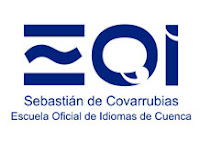 Os contamos en esta entrada cómo acceder a la Escuela Oficial de Idiomas (EOI).
Os contamos en esta entrada cómo acceder a la Escuela Oficial de Idiomas (EOI).Se puede consultar toda la información en la web oficial de la EOI.
- Se puede entrar con 14 años para estudiar idiomas no cursados en la Secundaria.
- Para Inglés y Francés, hay que esperar a cumplir 16 años.
- En primer lugar es necesario hacer una solicitud de admisión. El plazo es del 6 al 18 de mayo de 2016
- Para no tener que empezar desde primero de básico, podéis solicitar la prueba de nivel siempre y cuando estéis en 4º de ESO.
- Al acabar 2º de Bachillerato, se puede acceder directamente al nivel intermedio.
Monday, 25 April 2016
Wednesday, 6 April 2016
MODERNISM
There you are the presentation about MODERNISM we used in class. Hope it's useful to review the content and to enjoy the paintings once and again.
The Gothic style
Here you are the presentation about the Gothic style with some comments on every image to prepare the exam.
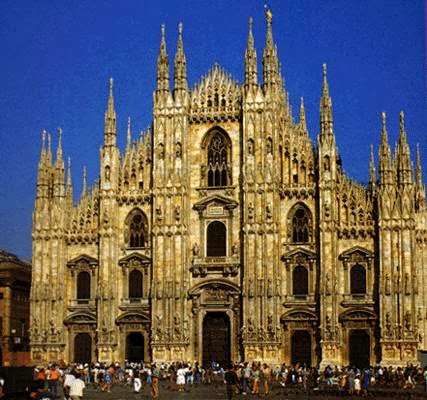

Tuesday, 29 March 2016
Monday, 28 March 2016
PRUEBAS LIBRES DE CERTIFICACIÓN - ESCUELA OFICIAL DE IDIOMAS
La Consejería de Educación, Cultura y Deportes de Castilla-La Mancha publicó el pasado día 15 de marzo la convocatoria de pruebas terminales específicas para la obtención del certificado de nivel en los idiomas impartidos en las Escuelas Oficiales de Idiomas (EOI) de nuestra región.

En el portal de Educación de la JCCM podéis descargar las pruebas de años anteriores que se ofrecen como modelo.

El plazo de matrícula en estos exámenes acaba el día 5 de abril, por ello, en esta entrada, os explicamos con detalle qué son estas pruebas, cómo acceder a ellas y para qué valen o, lo que es lo mismo, qué se puede hacer tras ellas.
- QUÉ SON: son exámenes libres en la Escuela Oficial de Idiomas para certificar el nivel de un idioma (A2 - B1 - B2)
- CÓMO ACCEDER:
- alumnos libres (es decir, que no estén yendo a clase en la EOI) con 14 años o quienes los cumplan en 2016.
- el plazo es del 16 de marzo al 5 de abril inclusive
- mediante Papás (con el usuario y contraseña) o con certificado digital.
- PARA QUÉ VALEN:
- es un certificado oficial de idioma de la EOI
- con el certificado de nivel, se puede acceder directamente a un curso específico de la EOI (a 1º de intermedio o 1º avanzado según el caso)
Os ofrecemos algunos detalles importantes de cara a la matrícula y al examen
- un alumno puede matricularse en el examen de dos niveles (B1 y B2 por ejemplo) pero: si el nivel inferior no está aprobado, no se corregirá el superior.
- la matrícula da derecho al examen de junio y al de septiembre.
- Para ser considerado APTO, deberá ser apto en cada una de las cinco destrezas. Para ello basta sacar un 5 en cada una. Si un alumno no es apto en junio, para septiembre se le guardarán las destrezas aprobadas.
- En el anexo I están las fechas de los exámenes escritos. Los orales se comunicarán pero serán en los días siguientes.
- El día del examen hay que llevar el DNI. Sin él no se podrá hacer el examen.
En la web de la Escuela Oficial de Idiomas de Cuenca podréis descargar la orden completa con la convocatoria y el documento (modelo 046) para abonar las tasas de examen. También podéis descargarlo desde el enlace que os damos.
Aquí tenéis los anexos para facilitar su consulta:
- anexo I: calendario de pruebas escritas
- anexo II: precios de matrícula
- alumno antiguo se considera cualquier persona matriculada anteriormente en cualquier EOI
- anexo III: características de las pruebas
- próximamente saldrá la Guía del Candidato con información más precisa sobre cada una de las pruebas.
Wednesday, 9 March 2016
American Civil War
Today we have enjoyed a clear explanation about the Amercan Civil War. Joe taught us about this important event.
He used a presentation similar to this one. There you are to help you to review the most important ideas.
He used a presentation similar to this one. There you are to help you to review the most important ideas.
Monday, 7 March 2016
CHRISTIAN KINGDOMS
To complete the activities requiered for the assessement of the unit about the Christian Kingdoms, you need to look at the following presentation and do what is said:
- describe the maps
- answer the questions
Wednesday, 24 February 2016
DESERTS
After talking to Joe about deserts , there you are some of the pictures we saw (California desert and Huacachina) and the amazing video he showed us.
KANT
There you are the presentation we used these days to talk about Kant.
Your task is: look at the last slide and decide if the sentences are strengths os weaknesses of Kantian theory.
Your task is: look at the last slide and decide if the sentences are strengths os weaknesses of Kantian theory.
Tuesday, 16 February 2016
The Crusades
There you are the presentation I told you about the Crusades. Hope you enjoy!
If you want to know more, have a look at this website http://www.lordsandladies.org/the-crusades.htm.
If you want to know more, have a look at this website http://www.lordsandladies.org/the-crusades.htm.
Thursday, 11 February 2016
Tuesday, 9 February 2016
GERMAN and ITALIAN UNIFICATIONS
To help you with the study, there you are the presentation we used in class about German and Italian Unifications.
Monday, 8 February 2016
HOMEMADE BAROMETERS
Our competition is already finished. This year there is a high level in your barometers but, we have a WINNER!
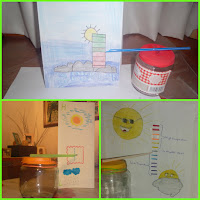
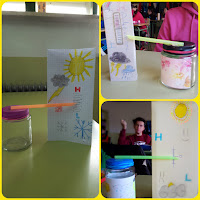
And the most creative barometer is .......... NUMBER 9 Congratulations!!!!!
But we also have to announce another prize: the most accurate, well decorated and easy to read.
And this is NUMBER 11
Congratulations!!!!
On TUESDAY 9th we will have the award ceremony in class


Friday, 5 February 2016
PHOTOSYNTHESIS AND CELLULAR RESPIRATION
Watch the video to learn more about photosynthesis and cellular respiration. Then do activity 9 (page 85). https://www.youtube.com/watch?v=M1iRxCaFjoo
Wednesday, 13 January 2016
Design your own city
You have a city divided in some areas. You must decide what
services should be in each of them. Be ready to justify your decisions.
Areas: central zone,
city extensions, the outskirts, rural urban fringe
Services:
- historic centre, oficial buildings (city hall)
- central business (CDB), banks offices
- services: hospitals, museums, university, sports facilities, theatre
- bus/train station
- residential areas, suburbs
- schools, shopping centre,
- shanty towns
- industrial parks
- recycling station, waste station, airport, factories, …
Map: * the red circle shows the old city which is at the top of a hill.
Subscribe to:
Posts (Atom)

















